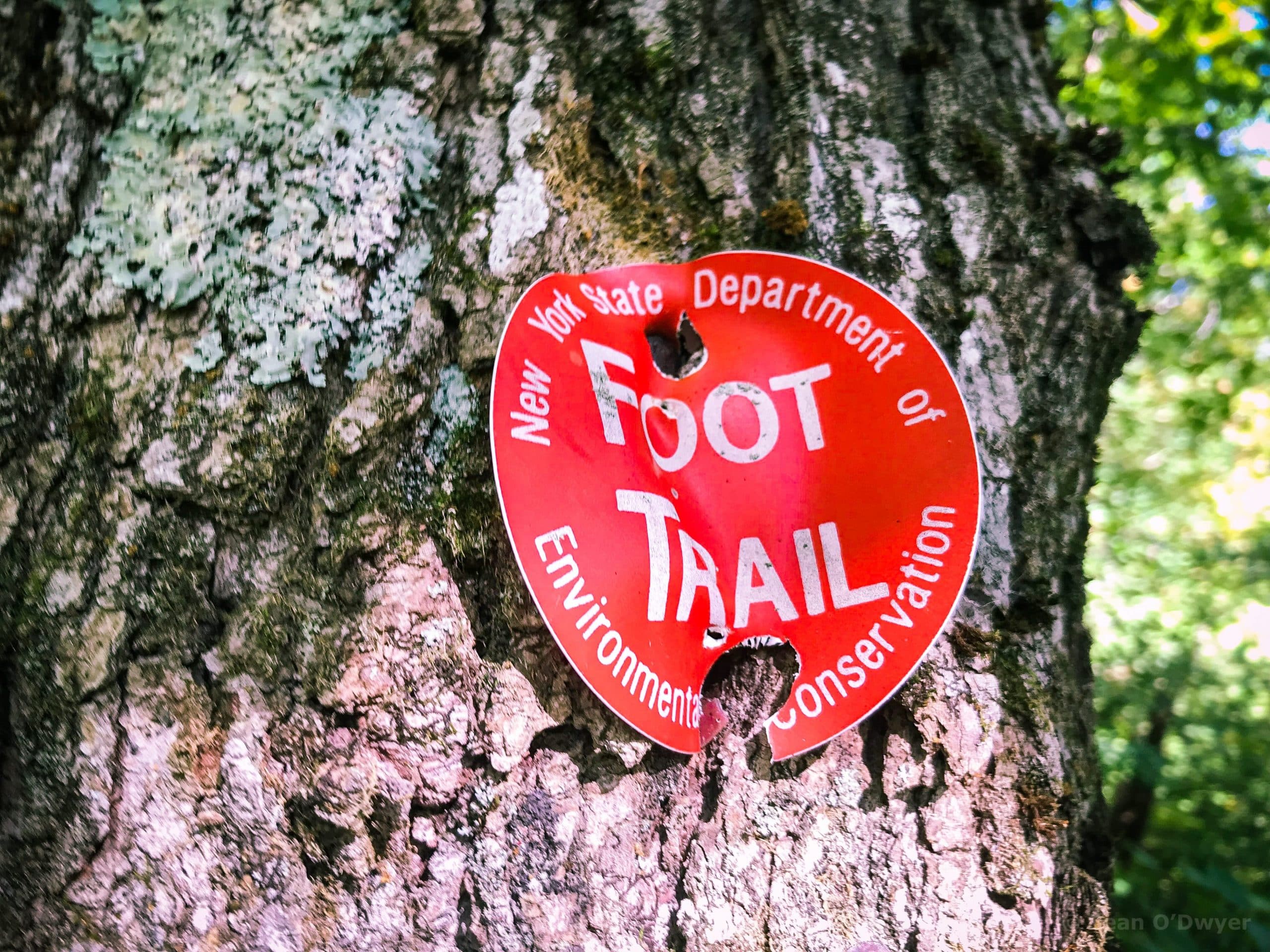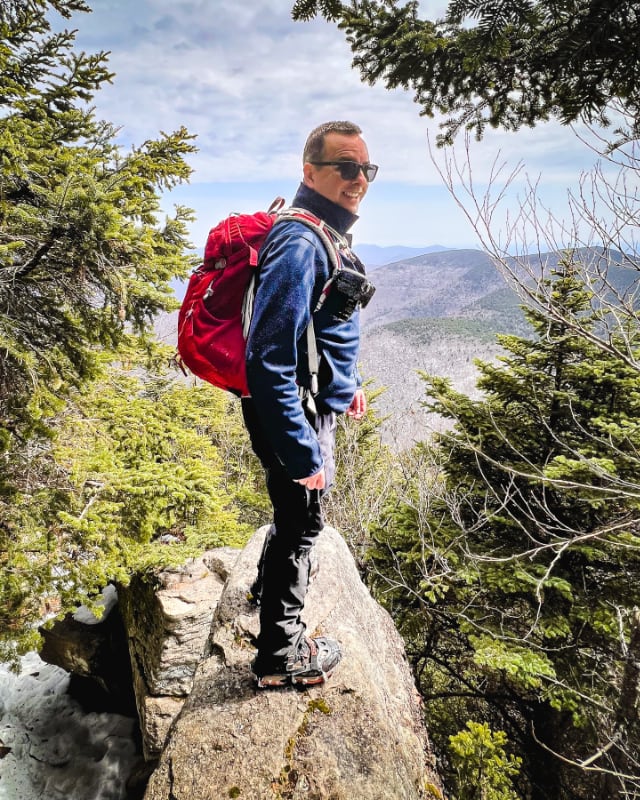Disclosure: This content may contain affiliate links. Read my disclosure policy.
How Long Will My Hike Take?
What is your hiking pace? One of the simplest things you need to know about any hike is: how long will it take? Knowing a planned hike’s duration is crucial to being able to figure out what to bring in terms of safety supplies, water and food.
Mountain Hikes are Hard Hikes
Mountain hiking is different from regular hiking because the terrain varies so much.
On perfectly level ground, most people will hike 3-4 miles per hour. On a steep section of Catskills or Adirondack mountain terrain, my personal pace sometimes drops as low as 1 mile per hour.
In between, your hiking pace changes constantly as your route switches from level trail to steeper climbs to rock scrambles.
Safety Issues
Developing a general ballpark is always a good idea, especially when daylight hours are short, or if you have a late start, or when your planned hike is long.
If you’re not comfortable with, and equipped for, hiking in the dark — see the wilderness safety section — you’ll want to leave at least an hour of contingency time before sunset to arrive back at your car. (But in the wilderness you should always pack a headlamp.)
You’ll also want to let your loved ones know what time they should start worrying ;-). Here’s who to call in case of emergency.
Hiking Pace Forumula
No formula can predict your hike time exactly. There are too many factors:
- your current body weight
- your current fitness level
- the length of your legs and stride
- the ruggedness of the terrain you’re crossing
- the steepness of the terrain
- river and stream crossings
- rock scrambles
- whether your route is trailed or if you’re bushwhacking
- the amount of gear you’re carrying
- the temperature and humidity
- wind, rain, snow
- add time for taking in the scenery
- add time for snacks, chats and just hanging out at the summits
- and, of course, add time for those crucial selfies
Even whether you’re hiking solo, with friends, or a larger group will change your pace dramatically.
All these factors converge to determine your hiking pace.
Naismith’s Hiking Pace Formula
An early formula was Naismith’s Rule which asks you to plan for a solid 3 miles per hour, and then add 30 minutes for every 1000’ of elevation gain.
But Naismith was born in the mid 1800s to lunatic-sounding Scots parents. They got him hiking in the mountains as a child and he was probably an outlier in terms of pace. He’d definitely have left me in the dust.
Modern Hiking Pace Formula
A common formula for our time is…
Allow 2 miles per hour — plus 1 hour for every 1000’ of elevation gain
That’s it! Nice and simple. Easy to grasp and easy to use. You can figure out an approximate elevation gain by subtracting the contour of the trailhead from the summit’s height.
If the contours betray any significant dips on the way to the summit, you should take those into consideration too; some mountains have routes that add significant elevation beyond a quick summit-minus-trailhead calculation.
For such hikes, and for multi-peak hikes, I always rough out the route in Gaia GPS — see Best Hiking Apps — to get a sense of a hike’s length and its total elevation gain.
Let’s look at some examples…
- Windham High Peak from Peck Road
6 miles with apx 1500’ elevation gain = 3 hrs plus 1.5 hrs = 4.5 hrs - Indian Head from Prediger Road
6.25 miles with 1600’ elevation gain = 3 hrs plus 1.6 hrs = 4.6 hrs - Burroughs Range from Wooldand Valley
9.3 miles with 3500’ elevation gain = 4.7 hrs plus 3.5 hrs = 8.2 hrs
Because I hike solo a lot, I usually carry about 20lbs (9kg) of gear and supplies. Even so, for me, these estimated times are longer than the hikes actually took to complete. But that’s fine. A hiking pace formula is a planning tool. It allows us to gauge what we’re getting ourselves into when preparing for a hike — and that’s key to staying safe.
One hiking pace variation (and one addition)
If you find this formula overestimates your hike duration, try reducing the elevation addition to 30 minutes per 1000’ of elevation gain.
That’s the formula I’m currently using: 2 miles per hour plus 30 minutes per 1000’ elevation. It’s what the Appalachian Mountain Club recommend in their “Book Time” formula. This gives me a very good estimation of a hike’s duration at my current pace, including rest stops and photography breaks.
I also add 15 minutes to the overall time to account for lunch or a dinner break. In a group, I’d add more time for a leisurely summit break. (In winter, I never stop for more than 5 minutes.)
One last example
For a recent hike up Panther Mountain, I calculated…
- Panther Mountain from Fox Hollow
10 miles with 2700′ elevation gain = 5 hrs plus 1.25 hrs, plus 15 minutes = 6.5 hrs
…and the actual total hike duration was 6.25 hours. A pretty solid estimate.
Winter Hiking Pace
In winter, you’ll be dealing with icy terrain, plus snow on the ground — and potentially snowstorms. This will slow you down more than you expect.
Take whatever time the formula above gave you and add at least 25% to the projected time.
Read More
The mountains can be treacherous.
Make sure you have all the gear you need for your next hike.
Make sure you’re prepared for the wilderness.
Always pack a pair of microspikes.
Always pack a headlamp.
Improving Your Hiking Pace
I don’t know about you, but I tend to start my hikes at way-too-fast a pace. I’m excited to get going! But it’s not the best strategy, especially on a long hike.
When I was distance running, I tended to start out too quickly there, too. But I learned to rein it in — in order to conserve energy for the second half of a 10k or a half-marathon.
The same advice applies to hiking. The more even you can keep your pace, the better you’ll do overall. Start out slowly.
Bonus: you’ll be less prone to injuries.
Another trick I learned from running uphill — maintain effort, not speed. This means slowing down and taking shorter steps. If you notice your breathing change, you might be pushing too hard. Slow down a little. Shorten your stride. Especially in winter, for safety reasons, it’s important to not break a sweat.

